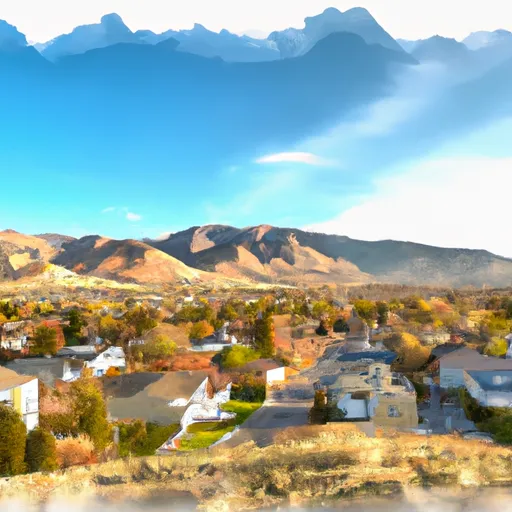-
 Snoflo Premium
Snoflo Premium
Get unlimited access to all our content
With no Ad interruptions! - Start Your Free Trial Login with existing account
Ruby-Valley
Eden Index
Climate
7.7
•
Recreation
3.5
•
Community
•
Safeguard
4.3/10

Ruby Valley is a picturesque region located in northeastern Nevada, known for its diverse natural attractions and outdoor recreational opportunities. The area experiences a semi-arid climate with four distinct seasons. Summers are warm and dry, with average temperatures ranging from 70-90°F, while winters are cold with temperatures dropping to 20-40°F, occasionally accompanied by snowfall.
Hydrologically, Ruby Valley is home to several freshwater streams and lakes, including the Ruby Lake National Wildlife Refuge, which provides important habitat for migratory birds and fish species. The valley is also fed by numerous springs, contributing to the overall richness of its hydrology.
Outdoor enthusiasts visiting Ruby Valley are spoilt for choice. Fishing is a popular activity, as the streams and lakes are abundant with trout, bass, and other game fish. The refuge also offers opportunities for bird watching, hiking, and wildlife photography. Additionally, the vast open spaces and mountainous terrain surrounding the valley provide ample room for activities like camping, hunting, horseback riding, and off-road exploration. Whether it's relaxation or adventure, Ruby Valley has something to offer for every nature lover.
What is the Eden Index?
The Snoflo Eden Index serves as a comprehensive rating system for regions, evaluating their desirability through a holistic assessment of climate health, outdoor recreation opportunities, and natural disaster risk, acknowledging the profound impact of these factors on livability and well-being.
Climate Health Indicator (CHI): 7.7
Ruby-Valley receives approximately
331mm of rain per year,
with humidity levels near 64%
and air temperatures averaging around
8°C.
Ruby-Valley has a plant hardyness factor of
6, meaning
plants and agriculture in this region thrive during a short period during spring and early summer. Most
plants will die off during the colder winter months.
By considering the ideal temperature range, reliable water supplies, clean air, and stable seasonal rain or snowpacks, the Climate Health Indicator (CHI) underscores the significance of a healthy climate as the foundation for quality living.
A healthy climate is paramount for ensuring a high quality of life and livability in a region, fostering both physical well-being and environmental harmony. This can be characterized by ideal temperatures, reliable access to water supplies, clean air, and consistent seasonal rain or snowpacks.
Weather Forecast
Streamflow Conditions
Central Nevada Desert Basins
Area Rivers
Central Nevada Desert Basins
Snowpack Depths
Central Nevada Desert Basins
Reservoir Storage Capacity
Central Nevada Desert Basins
Groundwater Levels
Recreational Opportunity Index (ROI): 3.5
The Recreational Opportunity Index (ROI) recognizes the value of outdoor recreational options, such as parks, hiking trails, camping sites, and fishing spots, while acknowledging that climate plays a pivotal role in ensuring the comfort and consistency of these experiences.
Access to outdoor recreational opportunities, encompassing activities such as parks, hiking, camping, and fishing, is crucial for overall well-being, and the climate plays a pivotal role in enabling and enhancing these experiences, ensuring that individuals can engage in nature-based activities comfortably and consistently.
Camping Areas
| Campground | Campsites | Reservations | Toilets | Showers | Elevation |
|---|---|---|---|---|---|
| South Ruby | 35 | 6,140 ft | |||
| Thomas Canyon | 49 | 7,573 ft | |||
| Ruby Lake | 35 | 6,062 ft |
Catastrophe Safeguard Index (CSI):
The Catastrophe Safeguard Index (CSI) recognizes that natural disaster risk, encompassing floods, fires, hurricanes, and tornadoes, can drastically affect safety and the overall appeal of an area.
The level of natural disaster risk in a region significantly affects safety and the overall livability, with climate change amplifying these risks by potentially increasing the frequency and intensity of events like floods, fires, hurricanes, and tornadoes, thereby posing substantial challenges to community resilience and well-being.
Community Resilience Indicator (CRI):
The Community Resilience Indicator (CRI) recognizes that education, healthcare, and socioeconomics are crucial to the well-being of a region. The CRI acknowledges the profound impact of these elements on residents' overall quality of life. By evaluating educational resources, healthcare accessibility, and economic inclusivity, the index captures the essential aspects that contribute to a thriving community, fostering resident satisfaction, equity, and social cohesion.

